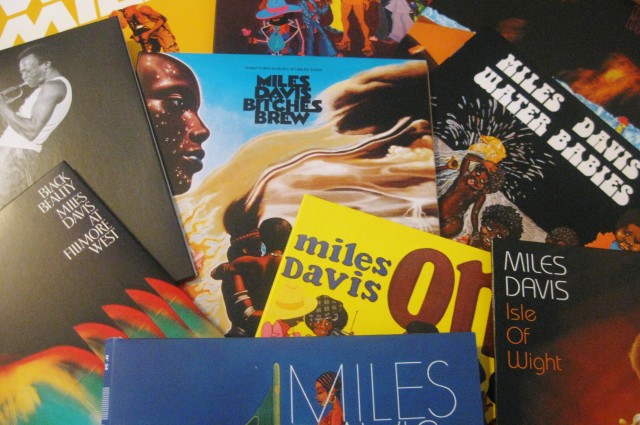
Many critics loved Stan Kenton's Music, and like many geniuses work, some hated it.
Being the odd ball I am with my listening tastes, typically leaning toward the progressive side of the spectrum, it's no surprise that of all the big bands that were born around WWII, Kenton's music would resonate the most with me.
Stan Kenton's more progressive music is not an easy listen most of the time. Much of his best work is complex, and demands focused listening.
I don't want to scare you away by this talk of complexity, we aren't talking the avant-garde of Cecil Taylor or Anthony Braxton. Kenton just didn't always swing like Basie, if ever, and the classical influences were heavily pronounced.
Any of the Johnny Richards or Bill Holman arranged records are a must listen I believe. Albums Like Cuban Fire and Viva Kenton with the the authentic Latin vibe showcase some of the better commercial albums from Kenton.
Wow! City of Glass is seriously advanced for 1947-1953
This period with Bob Graettinger's arranging is vastly underrated in the history of jazz. With all the great Kenton arrangers, Russo and Holman, Ruggulo and Richards, Graettinger might be the most important of them all.
Graettinger nearly ruined Kenton's career, as the dancers did not dig it apparently. This music foreshadows some of the later career work by saxophonist Sam River, albums like his Impulse Records release Crystals, and the Rivbea Orchestra music come to mind.
Graettinger died from lung cancer at the age of 33, an arranger lost in jazz history within Kenton's own lost period. Unfortunately because he was associated with Kenton, who in his own right in underrated, Graettinger will likely never get his full due.
Bob Graettinger's City of Glass
"Artistry in Rhythm" Kenton's signature tune
The track below "Artistry in Rhythm", Stan's first big hit, is a good place to start with Kenton to get an idea how different his music was in the mid 40's compared to people like Count Basie and Artie Shaw.
Remember: This music is now over 70 years old, and still has a progressive edge to it.
Chamber Jazz
Kenton's music could be difficult, almost a chamber jazz of sorts. Much of the time his music wasn't danceable, many different arrangers like Bill Holman and Johnny Richards wrote charts for Kenton.
These arrangers were allowed to stretch the music to the limit. Kenton's paranoia, especially early in his career about sounding too much Like Ellington or Basie Lead to almost a complete stripping out of the Blues in his music, swing was a 4 letter word if you will.
This ultimately was not a great choice in my opinion, the lack of blues, but it did offer a unique style that was completely original.
This no swing philosophy somewhat changed when artists like drummer Mel Lewis, saxophonists Gerry Mulligan, and Art Pepper joined his band. Kenton also enjoyed some commercial success with singer June Christy and The Four Freshman. For me, Kenton's best music combines all of these elements "swing & blues" with his progressive jazz sound. An album like Adventures in Jazz comes to mind. The perfect balance of modern progressive jazz and swing, a more commercial vibe is ultimately more satisfying for the listener.
As the 70's arrived, Kenton relaxed this limited swing rule a lot, and actually swung like crazy and had some of his most underrated recordings during that decade, many times rivaling his best 50's and 60's work.
Some of my favorites come from the 1970's era:
Almost all of Kenton's Early to mid 70's albums are all tremendous. At the time Stan had a very young band with him, and that creative spirit really lead to some good music to my ears, plus contemporary music of the day found its place in the Music.
One of my personal favorite albums, is Stan Kenton Plays Chicago, this was a tribute of sorts to the rock band Chicago, who is also a band I rather like.











